
All categories
Featured selections
Trade Assurance
Buyer Central
Help Center
Get the app
Become a supplier

(4544 products available)
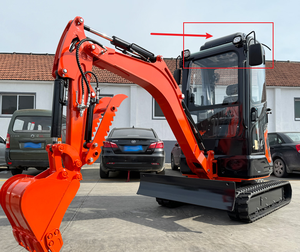
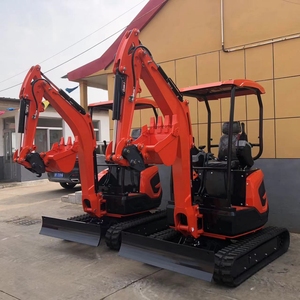
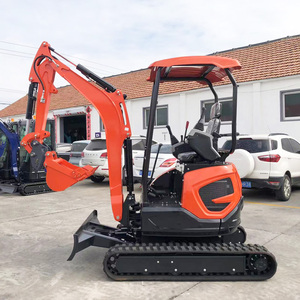
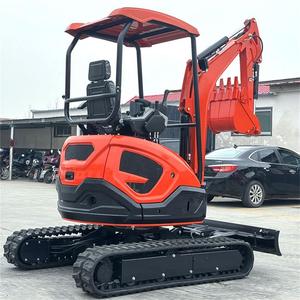
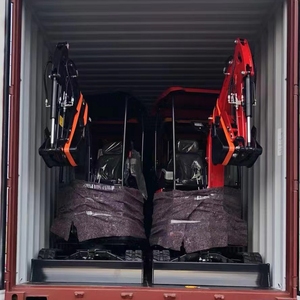
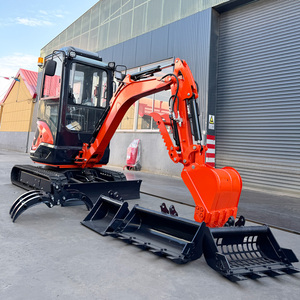








































The Sany SY75 excavator comes in different variants that cater to distinct requirements. These will be discussed in the following paragraphs:
Standard Sany SY75C/CS Excavator:
This is a typical compact excavator fitted with a cab. Its size and dimensions make it easy to maneuver on tight job sites. Despite being smaller in stature than a full-sized excavator, this model possesses the same power and versatility. It features advanced technologies that boost overall efficiency on the job. Four working modes are available to ensure optimum performance in different applications. They include Breaker, Clump, Mine, and Normal Modes.
Sany SY75D Excavator (with Deutz Engine):
Equipped with a powerful and fuel-efficient Deutz engine, this model is suitable for a range of diverse applications in construction, mining, and urban infrastructure. Its compact design allows it to operate in limited space. Hydraulic technologies enhance its digging and lifting power and overall work efficiency. An intelligent control system helps to reduce fuel consumption and ensure easy operation. Like the SY75C, this D model also offers different working modes tailored for specific tasks.
Sany SY75D-0 Excavator:
This variant has a 6-cylinder engine and ample operating weight and horsepower for larger jobs. The Sany SY 75D0 excavator still has the standard excavator's agility and flexibility but provides greater digging capacity and push power comparable to larger models. Advanced hydraulic technologies deliver optimal productivity and fuel economy on the job site.
Sany SY75S Excavator:
By adopting a stylish, contemporary design language, this model has attractive aesthetics both inside and outside of its cab. Nevertheless, it's important to note that both the appearance and the operational features are crucial for operator effectiveness and comfort while working on various projects from beginning to end.
Sany SY75 excavator has the following key specifications:
Proper Sany excavator maintenance can prevent expensive repairs and ensure that it gives good service for many years. Here are some six important daily maintenance tips for a 75-ton Sany excavator.
The 7-ton mini excavator is an effective and productive machinery for use in various industries. It is most typically used for landscaping tasks, but its versatility enables it to be used across various application scenarios.
Landscaping/ Gardening Projects
The 7-ton mini excavator is commonly used in the home gardening sector for landscaping as well as lawn and garden projects. It efficiently carries out tasks such as creating paths, planting trees, removing debris, and digging trenches or ponds. Its small track and swing radius enable it to move around obstacles without damaging other existing structures.
Utility Work
In the plumbing and electrical industry, the mini excavator digs trenches to either lay pipes or cables or facilitate easy access for the repair of existing utilities. It carries out this task efficiently with great precision, thereby minimizing the risk of damage to surrounding utilities.
Construction Projects
In the construction industry, the excavator can be used for various tasks, such as clearing a site, digging foundations, or even backfilling. Its ability to navigate tight spaces and carry out this task efficiently makes it an ideal piece of machinery for use on construction sites.
Demolition Work
Small-scale demolition projects that involve the dismantling of existing structures can be handled with ease using a mini excavator. It is often used because it offers great control while it breaks concrete, removes foundations, or takes down walls.
Outdoor Projects
In both commercial and residential properties, the SY75 excavator can be used for tasks such as grading, drainage installation, and trenching, to name a few. It is a preferred choice due to its ability to easily and accurately imitate levels.
Snow Removal
The mini excavator can also be used during the winter season for snow removal. Fitted with a snow plow or a bucket attachment, the excavator can clear pathways and roads of any existing snow, thereby creating a safe passage. Other tasks it can carry out during winter include removing ice and hauling snow.
When purchasing an excavator for business use, it is important to consider features and performance first. Buyers should choose the right excavator based on their application needs and work conditions.
Operational needs:
First, buyers need to determine what tasks they need the excavator to handle. Consider the type of material to be excavated, the depth and density of excavation, and any other loading or excavation requirements. For example, digging foundation soil will call for excavating clay soil at a great depth. An excavator with high digging force and a long arm, such as the SANY SY75 excavator, is well suited for this application. An excavator with a clamshell bucket will be required for layered rocky terrain.
Work conditions:
Consider the working environment, such as space constraints, technological challenges, and soil conditions. Narrow urban sites may require a small to medium-size excavator like the SANY SY75C excavator, while large, open construction sites may be able to use a larger SANY excavator model. Excavators with rubber tracks are good for urban roads, while those with steel tracks are suitable for open, rugged terrain.
Fuel economy:
Please choose an excavator with a suitable engine type and power system to improve fuel efficiency. A powerful engine is needed for tough excavation tasks, while a mid-sized excavator like the SANY SY75CC excavator can be used to reduce fuel consumption and carbon emissions on less-demanding jobs.
Operator comfort and safety:
The excavator's operator cab and control system should be looked at. Choose an excavator with a well-designed operator cab and an effective damping system to reduce noise and vibration. This will help minimize operator fatigue and the risk of occupational disease. Also, safety features like anti-tipping devices and overload protection are a must.
Q1: Which countries use excavators the most?
A1: Excavators are popular in several countries for construction, mining, urban development, and farming. The most significant markets for excavators include the United States, Russia, Japan, India, and Australia.
Q2: How long do excavators last?
A2: An excavator usually lasts around 7 to 15 years, depending on factors like usage intensity, maintenance, machine quality, and, in case of wheeled excavators, the operational environment.
Q3: What is the easiest way to maintain an excavator?
A3: Regular checking of fluids like fuel and oil, routine filtering replacement, periodic inspections, and timely repair of minor problems can keep an excavator well-maintained with relative ease.